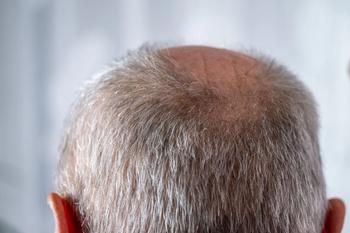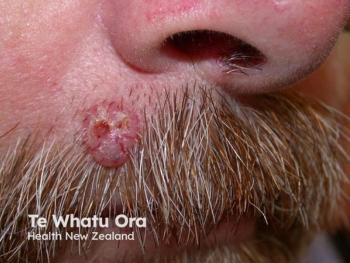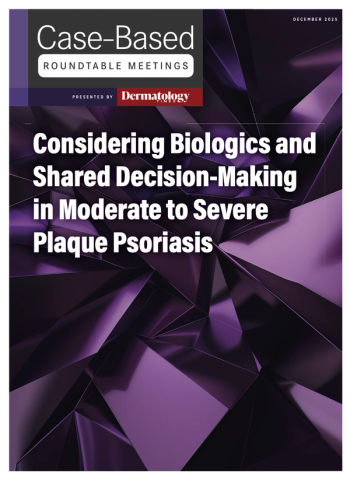
Nearly Half of Patients Respond to Ritlecitinib for Alopecia Areata, With Most Sustaining Results
Key Takeaways
- Ritlecitinib demonstrated significant efficacy in AA, with nearly half of patients achieving a clinical response and 46% achieving complete scalp hair regrowth.
- Younger, female patients with milder disease and shorter AA duration were more likely to respond to ritlecitinib treatment.
Subgroups more likely to respond included women and those with shorter-duration, less-extensive hair loss.
Ritlecitinib (Litfulo; Pfizer Inc) led to a clinical response in nearly half of patients with alopecia areata (AA) and a partial response in 12.6% of study participants, according to a study published in the Journal of the European Academy of Dermatology and Venereology.1
Researchers also reported that sex and duration of hair loss were factors in such patterns of clinical response.
Background and Methods
Already approved by the US FDA for severe AA in adults and adolescents aged 12 years and older,2 the highly selective Janus kinase 3 inhibitor has demonstrated significant efficacy in AA. The phase 2b/3 ALLEGRO trial (
In addition to demonstrable efficacy in clinical response as denoted by the Severity of Alopecia Tool (SALT), additional subgroup research has also demonstrated ritlecitinib's efficacy in diverse patient populations.4-5
The present study analyzed both the ALLEGRO study and the ongoing, open-label phase 3 ALLEGRO-LT study (NCT04006457) to assess and describe the clinical response to ritlecitinib 50 mg in patients with AA. The analysis focused on patients with greater than or equal to 50% scalp hair loss, including alopecia totalis (AT) and alopecia universalis (AU), who were either rollover or newly enrolled in ALLEGRO-LT. Patients were categorized into 6 response groups based on SALT score trajectories up to 24 months.
Findings
Ritlecitinib 50 mg once daily demonstrated promising durability and depth of clinical response in patients with moderate to severe AA. Among 191 patients in the rollover cohort, nearly half (45.5%) achieved significant scalp hair regrowth, defined as a SALT score of less than or equal to 20 by month 24. These responders were further categorized into early (18.3%), middle (16.8%), and late (10.5%) responders.
Of those who responded, 46.0% achieved complete scalp hair regrowth (SALT score of 0), and 93.1% maintained their response through 2 years. Notably, improvements were observed in all responder categories, with early and middle responders reaching near-complete regrowth by month 12.
Researchers reported that baseline characteristics played a substantial role in predicting treatment outcomes. Early responders tended to be younger, were predominantly female (91.4%), and had milder disease at baseline, with an average SALT score of 79.9 and a shorter average duration of the current AA episode (2.3 years).
In contrast, nonresponders were more likely to have more extensive hair loss, higher SALT scores (average 96.8), longer disease duration, and a higher prevalence of AT or AU. The presence of abnormal eyebrow and eyelash assessments at baseline was also more common in nonresponders.
Multivariable regression modeling confirmed that several independent baseline factors were significantly associated with reduced odds of achieving a meaningful response to ritlecitinib. These included older age, male sex, longer duration of significant scalp hair loss (≥ 50%), and higher baseline SALT scores.
Specifically, a 21-year increase in age corresponded to a 63.6% reduction in the likelihood of response, whereas a 3-year increase in scalp hair loss duration reduced the chance of response by 46.5%. The presence of comorbid atopic conditions such as asthma, allergic rhinitis, or autoimmune thyroiditis did not impact treatment outcomes.
Conclusions
These findings highlight the importance of early intervention and patient selection when considering ritlecitinib for AA management.
"These analyses highlight the importance of extended treatment duration and avoiding premature therapy discontinuation for optimal outcomes," the study authors wrote. "While initiating ritlecitinib treatment before the onset of very severe hair loss and early in an episode of severe disease may enhance the chances of hair regrowth, further research is needed to confirm this possibility and to determine the most effective timing for intervention."
References
- King B, Mirmirani P, Lo Sicco K, et al. Patterns of clinical response in patients with alopecia areata treated with ritlecitinib in the ALLEGRO clinical development programme. J Eur Acad Dermatol Venereol. 2025;39(6):1163-1173.
doi:10.1111/jdv.20547 - FDA approves Litfulo (ritlecitinib) for adults and children ages 12+ with severe alopecia areata. National Alopecia Areata Foundation. June 23, 2023. Accessed June 16, 2025.
https://www.naaf.org/news/fda-approves-litfulo-ritlecitinib-for-adults-and-children-ages-12-with-severe-alopecia-areata/ - PF-06651600 for the treatment of alopecia areata (ALLEGRO-2b/3). ClinicalTrials.gov. Updated February 24, 2022. Accessed June 16, 2025.
https://clinicaltrials.gov/study/NCT03732807 - Zhang X, Ye Y, Sun W, et al. Efficacy and safety of ritlecitinib in Asian patients with alopecia areata: a subgroup analysis of the ALLEGRO phase 2b/3 trial. J Dermatol. Published online March 12, 2025.
doi:10.1111/1346-8138.17539 - Mukenge MM, Rao S, Obeime I, Larrondo J, Palmer V, McMichael A. JAK inhibitors in African American patients with alopecia areata: a case series. Int J Dermatol. Published online April 24, 2025.
doi:10.1111/ijd.17763
Newsletter
Like what you’re reading? Subscribe to Dermatology Times for weekly updates on therapies, innovations, and real-world practice tips.


















